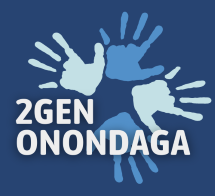
29 Oct Guaranteed Rent with 2 Gen Syracuse
 2 Gen Syracuse: A Comprehensive Guide
2 Gen Syracuse: A Comprehensive Guide
In an era where the complexities of poverty and housing instability are increasingly recognized, New York State has embraced a progressive approach: the two-generation (2 Gen) strategy. This approach, unlike traditional methods, aims to address the needs of both children and their parents simultaneously, acknowledging that the well-being of one is inextricably linked to the other. In this post, we’ll delve deep into the concept of the 2 Gen approach in New York State, exploring its goals, mechanics, eligibility criteria, benefits for landlords, and critical aspects such as rent guarantees and waiting lists.
2 Gen Onondaga Contact [email protected] http://www.ongov.net/dss/2Gen.html http://ongov.net/dss/documents/2Gen_Brochure.pdf
The Goal of the 2 Gen Approach:
The primary objective of the two-generation approach is to break the cycle of poverty by addressing the needs of the entire family unit. The premise is simple yet profound: when you uplift parents, their children are more likely to thrive, and when children thrive, their parents are more likely to succeed. This holistic strategy focuses on providing comprehensive services that span education, economic support, health services, housing assistance, and building social capital.
How It Works:
The 2 Gen approach works through a multifaceted strategy, supporting families on multiple fronts. It offers educational support, providing children with access to quality early childhood education, after-school programs, and mentoring, while adults benefit from opportunities for continuing education, vocational training, and career advancement. In terms of economic support, it assists with job placement, skill development, and providing resources for financial independence. Health services are also integral, ensuring comprehensive healthcare access for both physical and mental well-being of children and adults alike.
When it comes to housing, the approach focuses on providing stable and affordable options, ranging from rental assistance to supportive housing programs designed to meet specific needs. Eligibility for these programs often hinges on various factors such as income level, family composition, and particular needs, with most programs targeting low-income families, especially those with children.
Landlords play a vital role in the effectiveness of 2 Gen housing assistance programs, and they stand to benefit in several ways. Firstly, these programs often lead to longer tenancy periods, which in turn reduces turnover costs. Moreover, many programs ensure consistent and timely rent payments, thereby lowering the risk of rent defaults. Additionally, some landlords might be eligible for tax incentives as a reward for providing affordable housing.
Rent Guarantees and Annual Increases:
In many housing assistance programs, rent is partially or fully guaranteed by the program, which means landlords receive consistent payments. As for rent increases, they are typically subject to regulations and agreements between landlords and the program administrators. Annual rent increases may be allowed, but they must usually adhere to fair market rent standards and guidelines set forth by the program.
Like many housing assistance programs, there can be a waiting list, given the high demand and limited resources. The length of the wait can vary based on factors like location, availability of housing, and specific needs of the applicants.
SIGNING UP FOR 2 GEN SYRACUSE, NY
Step 1: Research and Identify the Appropriate 2 Gen Program
- Identify Your Needs: Determine what kind of assistance you and your family require (e.g., housing, education, healthcare, job training).
- Research Programs: Look for 2 Gen programs available in your area. You can search online, visit local community centers, or contact social service agencies for information.
- Gather Information: Understand the goals, services, and eligibility criteria of each program. Some programs might focus more on housing, while others might emphasize education or health services.
Step 2: Determine Eligibility
- Review Eligibility Criteria: Common criteria include income level, family composition, and residency. Specific programs might have additional requirements.
- Gather Necessary Documentation: This might include proof of income, identification documents, proof of residency, and any other required paperwork.
Step 3: Prepare and Submit Application
- Obtain Application Forms: These might be available online, at local offices, or through community organizations.
- Fill Out Application Forms: Provide accurate and comprehensive information. Incomplete or incorrect information might delay the process or lead to disqualification.
- Attach Required Documentation: Ensure all necessary documents are attached as per the instructions.
- Submit the Application: Follow the instructions for submission, which could be online, via mail, or in person.
Step 4: Attend Required Meetings or Interviews
- Schedule Appointments: If the program requires meetings or interviews, schedule them promptly.
- Prepare for the Meeting: Understand what might be discussed and prepare any additional documentation that might be required.
- Attend the Meeting: Be punctual, and provide honest and clear responses to any questions.
Step 5: Wait for Approval and Follow-Up
- Track Application Status: Some programs might offer a way to track your application status online or through phone calls.
- Respond to Queries: If the program administrators have any queries or require additional information, respond promptly.
- Receive Notification: You will receive a notification regarding your application’s approval or rejection. This might take several weeks or even months, depending on the program.
Step 6: Participate in the Program
- Understand the Services: Once accepted, ensure you have a clear understanding of the services offered and your responsibilities.
- Engage Actively: Participate actively in the program, whether it’s attending workshops, training sessions, or utilizing the services offered.
- Stay Compliant: Follow any rules or guidelines set by the program to remain in good standing.
Additional Tips:
- Seek Assistance: If you find the application process challenging, seek help from social workers, community organizations, or program administrators.
- Be Patient: The process can be lengthy, and waiting lists are common, especially for popular programs.
- Stay Informed: Keep yourself updated on any changes in the program policies or eligibility criteria.



Sorry, the comment form is closed at this time.